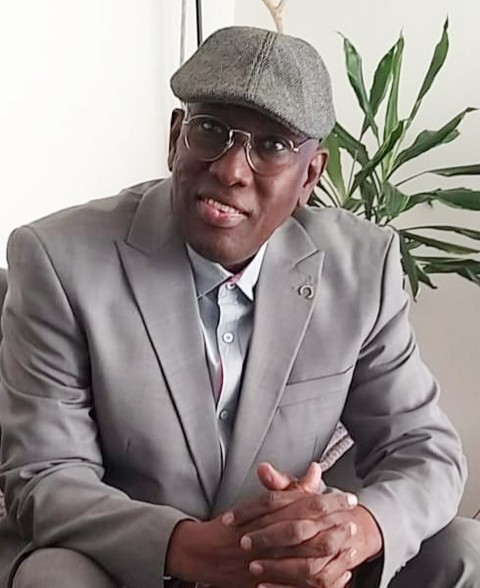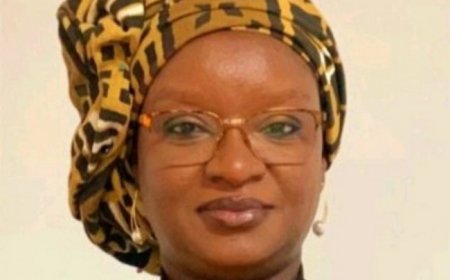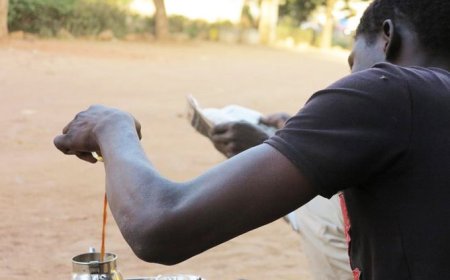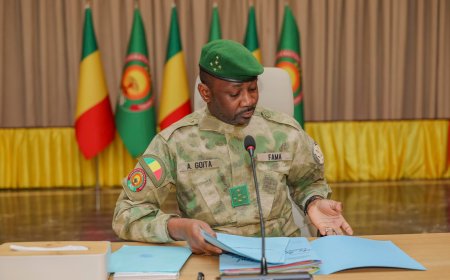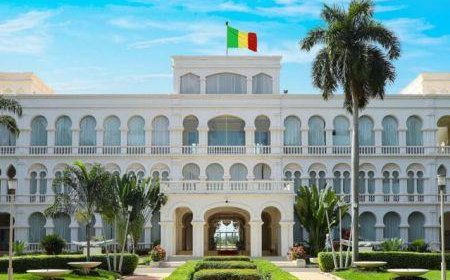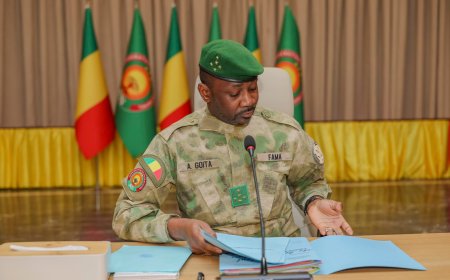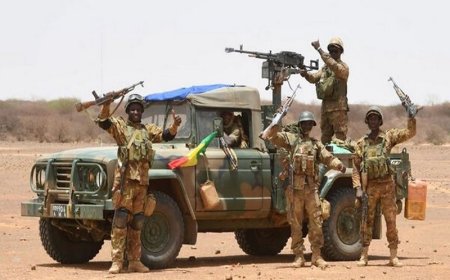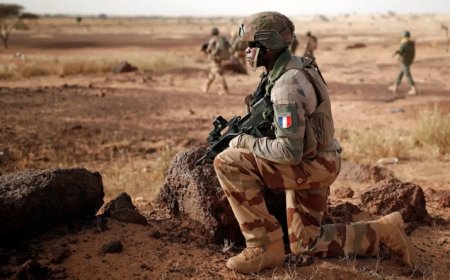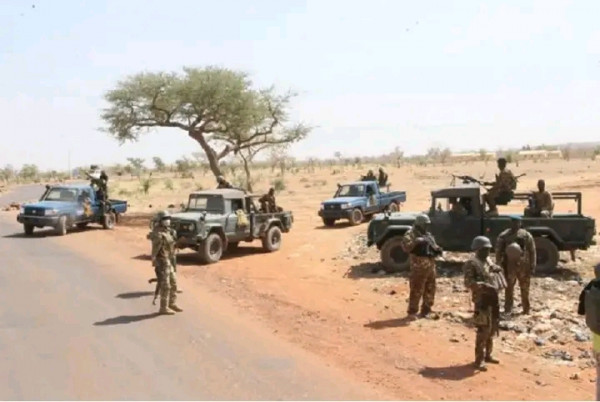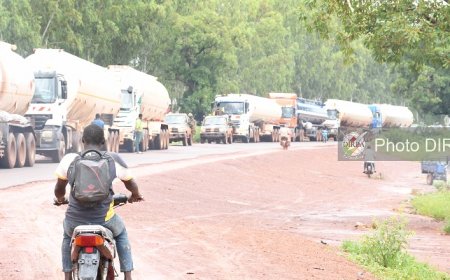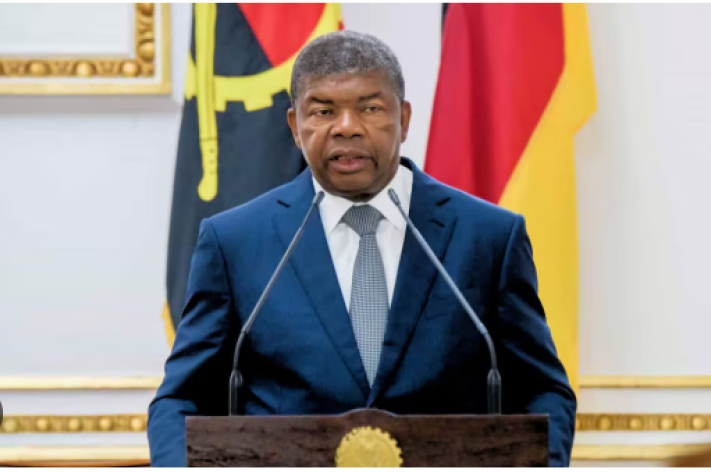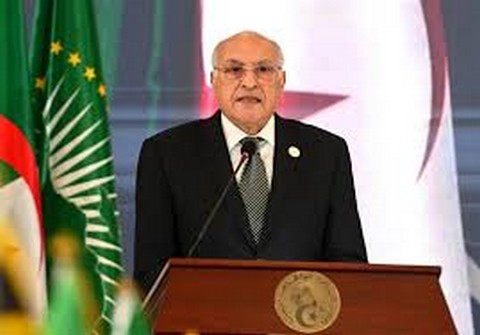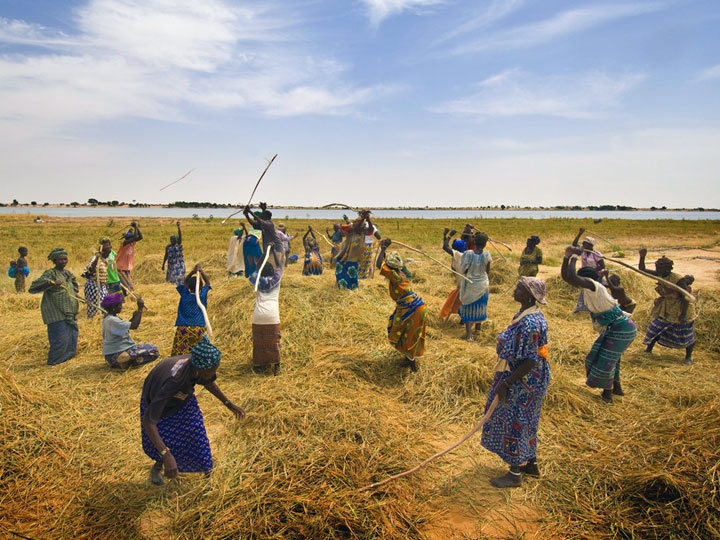Les chefs d’Etat et de gouvernement africains présents dans la capitale éthiopienne, entendent s’inscrire dans une dynamique de prise en charge de certaines préoccupations pour éviter qu’elles ne deviennent un casse-tête humanitaire.
Le 32è sommet des chefs d’Etat et de gouvernement de l’Union africaine (UA), sur le thème : «Année des réfugiés, des rapatriés et des personnes déplacées : vers des solutions durables aux déplacements forcés en Afrique», s’est ouvert dimanche dans le Nelson Mandela Plenary Hall au siège de l’UA à Addis-Abeba (Ethiopie), en présence de plusieurs dirigeants, notamment, Ibrahim Boubacar Keïta (Mali), Paul Kagamé (Rwanda), président en exercice sortant qui a passé le témoin à son homologue Abdel Fattah Al Sisi (Egypte), Pr Alpha Condé (Guinée), Mahamadou Issoufou (Niger), Alassane Dramane Ouattara (Côte d’Ivoire), Denis Sassou Nguesso (Congo), Oumar el-Béchir (Soudan), Roch Marc Christian Kaboré (Burkina Faso), Idriss Deby Itno (Tchad), Theodoro Obiang Nguema (Guinée Equatoriale), le Premier ministre éthiopien Ahmed Abiy, Andry Rajoelina (Madagascar), Felix Tshisekedi (RDC). Ce dernier participe pour la première fois au sommet de l’UA.
Le sommet a enregistré aussi la présence d’invités de marque comme le secrétaire général des Nations unies, Antonio Manuel de Oliveira Guterres, le président de l’Etat de Palestine, Mahmoud Abbas, la présidente de l’Estonie, Kersti Kaljulaid, le patron de Microsoft, Bill Gates et le président de la Fifa Gianni Infantino.
Le présent rendez-vous de la capitale éthiopienne était l’occasion pour les dirigeants africains de trouver des solutions aux conflits armés qui engendrent des catastrophes humanitaires. Les chefs d’Etat se sont attachés aussi à renforcer la résilience des populations soumises à la pression des conflits, des tensions politiques et autres.
Autre sujet d’importance, les difficultés du continent, notamment en termes de sécurité et de stabilité des peuples africains qui paient parfois un lourd tribut aux catastrophes et aux conflits armés. Il y a donc urgence et nécessité pour nos dirigeants de trouver les mécanismes requis afin d’éviter les déplacements des peuples et d’explorer les alternatives efficaces de prise en charge de ces phénomènes.
Les pays africains doivent donc identifier les actions prioritaires à mettre en œuvre et s’inscrire dans une vision concertée pour mieux contrôler le flux des réfugiés, des rapatriés et déplacés internes.
Les chefs d’Etat et de gouvernement du continent sont convaincus de la nécessité d’accorder une plus grande attention à ces personnes en détresse et de leur implication personnelle pour gagner ce combat de dignité humaine, comme le président Ibrahim Boubacar Keïta aime souvent à le dire.
SOUTENIR LA CAUSE AFRICAINE – Prévenir les catastrophes humanitaires, liées surtout aux conflits armés, sur le continent africain est un objectif à portée de main, mais requiert une plus grande justice, des actions de développement à la base, une juste répartition des ressources de nos pays. Les dirigeants africains en sont convaincus. Beaucoup sont en train d’accomplir de gros efforts de développement dans leurs pays respectifs (certains ont véritablement mis le cap sur l’émergence).
Des pays développés et stables, voilà ce qu’il faut pour éviter les catastrophes, très souvent liées aux crises politiques qui débouchent sur des répressions sanglantes, des affrontements ethniques. Toutes choses qui engendrent le départ des populations de leurs terres natales pour se réfugier dans des zones de paix, de stabilité.
À l’ouverture de la rencontre, les différentes interventions avaient un point commun : mettre le doigt sur les préoccupations réelles du continent et ses défis futurs.
Premier orateur de la série des interventions, le président de la Commission africaine a rappelé les progrès accomplis dans les pays du continent en termes de paix et de réconciliation. Moussa Faki a aussi reconnu que la conscience et les pratiques démocratiques en Afrique ont enregistré des avancées, avant de souligner que 16 élections générales sont attendues en Afrique cette année.
Le patron de la Commission a expliqué aussi que l’UA avait invité certaines personnalités qui ont investi leur temps, leurs ressources et leur énergie pour faire progresser les programmes de développement en Afrique. Bill Gates a été convié dans ce contexte. Le dirigeant du géant de l’informatique a expliqué que son engagement pour le continent a pris corps, il y a un peu plus de 25 ans lorsqu’il a été sollicité par Nelson Mandela pour financer les élections en Afrique du Sud. Il y a contribué sans connaître grand chose de ce pays encore moins de l’Afrique. Il a rassuré qu’il continuerait à soutenir la cause africaine. Mais, pour lui, la solution passe par l’investissement dans les programmes de développement, notamment dans le secteur de la santé et de l’éducation. Il a expliqué qu’un dollar investi dans la santé génère 20 dollars de bénéfices socioéconomiques.
Quant au président de la FIFA, il a rappelé que l’Afrique a beaucoup apporté au football, un sport qui peut aider le continent à s’unir davantage. Pour lui, le football est plus qu’un jeu, il a une fonction sociale et économique et peut changer l’état d’esprit d’une nation. Gianni Infantino a aussi évoqué la nécessité de faire en sorte que le continent passe d’une éternelle promesse à une réalité dans le football.
Quant à Antonio Guterres, il a rassuré que les Nations unies soutiendront les différents agendas africains. Le secrétaire général des Nations unies a également identifié des défis à relever, notamment la paix et la sécurité, le changement climatique.
RÉFORME DE L’UA – Pour le président en exercice sortant de l’UA, l’objectif visé est de construire une organisation africaine solide capable de renforcer les piliers des agendas du continent et les aspirations des peuples. Paul Kagamé a aussi évoqué l’impératif d’examiner les spécifications du passeport africain, présenté il y a deux ans et qui avait suscité énormément d’espoir. Pour lui, au rythme de l’évolution du processus, le protocole de la zone de libre échange entrera rapidement en vigueur.
Le président égyptien qui a désormais pris les rênes de l’UA, a rappelé que le continent doit faire face à des défis dans le cadre de la défense de ses intérêts. «La faiblesse de l’Afrique réside dans les divisions. Une Afrique unie sera une des plus grandes puissances», a estimé le général Abdel Fattah Al Sisi, avant de décliner le programme qu’il entend accomplir dans son mandat, notamment en termes de renforcement de la conciliation et la diplomatie de prévention, de l’amélioration de la sécurité et des conditions d’offres d’emplois.
Il faut aussi retenir qu’avant l’ouverture officielle du sommet, les chefs d’Etat et de gouvernement ont eu une séance de travail à huis clos au cours de laquelle ils ont examiné le rapport sur la réforme de l’UA, l’alignement des textes de certains organes, le règlement intérieur de la Conférence des chefs d’Etat et de gouvernement, celui du Conseil exécutif et le statut de la Commission de l’UA. Ils ont aussi planché sur le rapport relatif aux questions liées à la zone de libre échange continentale africaine. Le chef de l’Etat nigérien a rendu compte à ses pairs du processus en cours sur l’Accord de création de ladite zone et sur les rencontres des experts et des ministres du Commerce.
Les chefs d’Etat et de gouvernement ont aussi discuté du rapport de la mise en œuvre de la décision de la Conférence sur les négociations post-Cotonou. Sur la question, le président de la Commission de l’UA, Moussa Faki Mahamat, a informé sur les actions menées dans la mise en application de la décision du Sommet extraordinaire de novembre 2018 relative à la poursuite des négociations Afrique Caraïbe Pacifique/Union européenne (ACP-UE), dans le cadre du mandat convenu d’accord parties.
Après la séance de photo de famille, les chefs d’Etat et de gouvernement ont dévoilé une stèle érigée, dans l’enceinte du siège de l’organisation africaine, en l’honneur de l’ex-empereur éthiopien, Haïlé Sélassié.
Envoyé spécial
Bréhima DOUMBIA
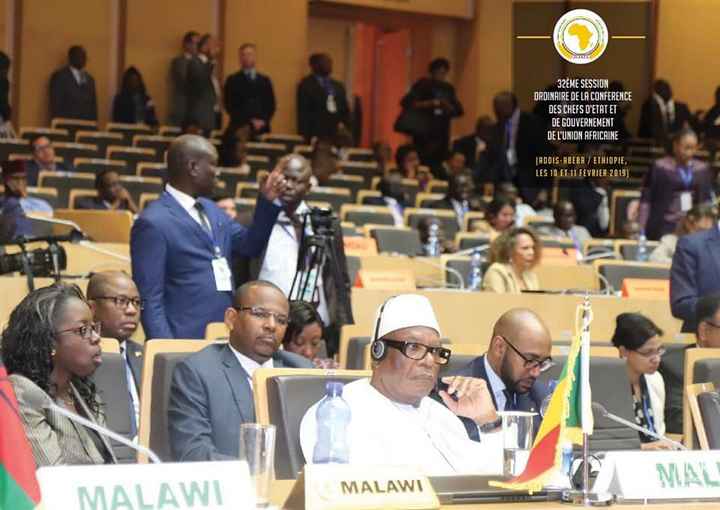
 Like
0
Like
0
 Je kiff pas
0
Je kiff pas
0
 Je kiff
0
Je kiff
0
 Drôle
0
Drôle
0
 Hmmm
0
Hmmm
0
 Triste
0
Triste
0
 Ouah
0
Ouah
0




